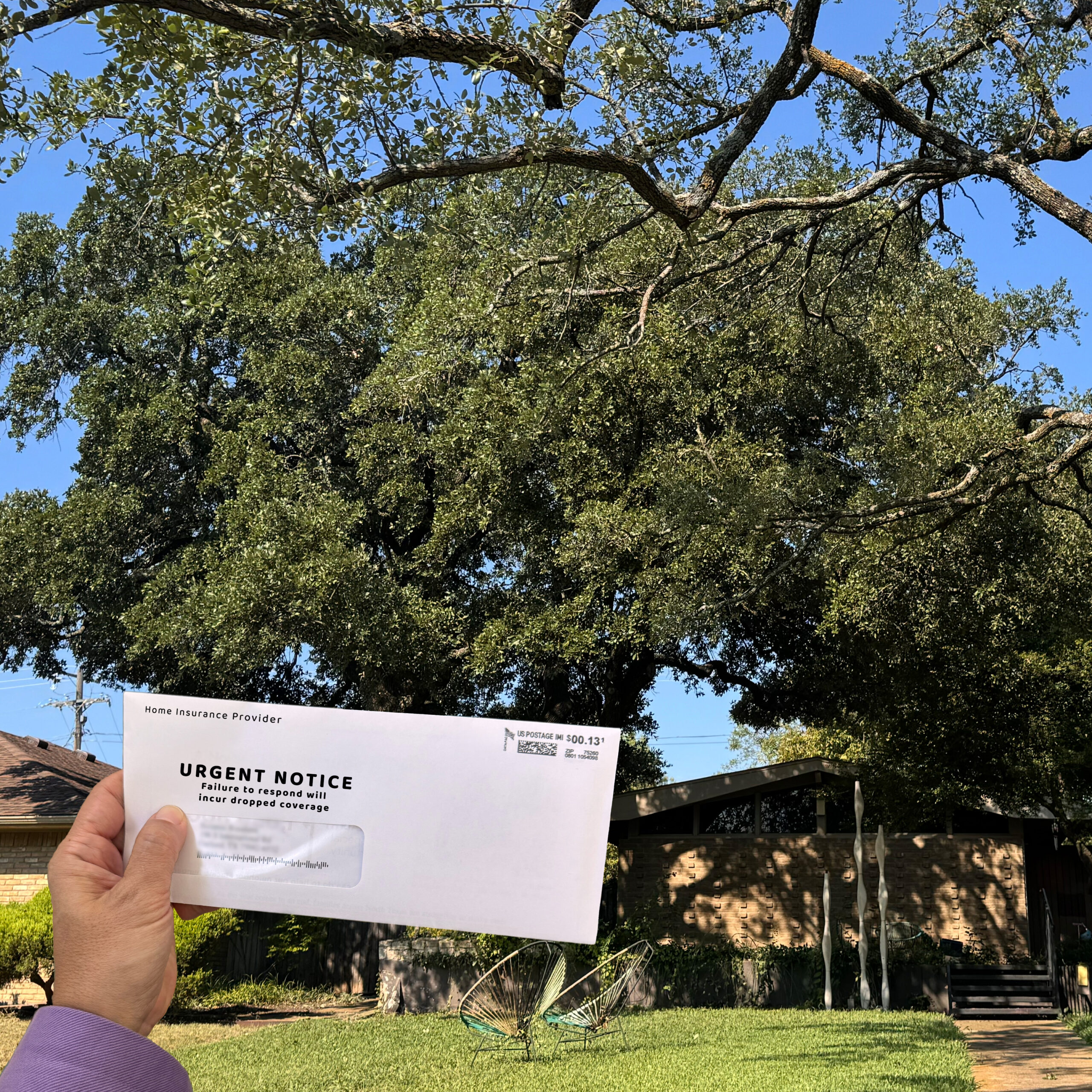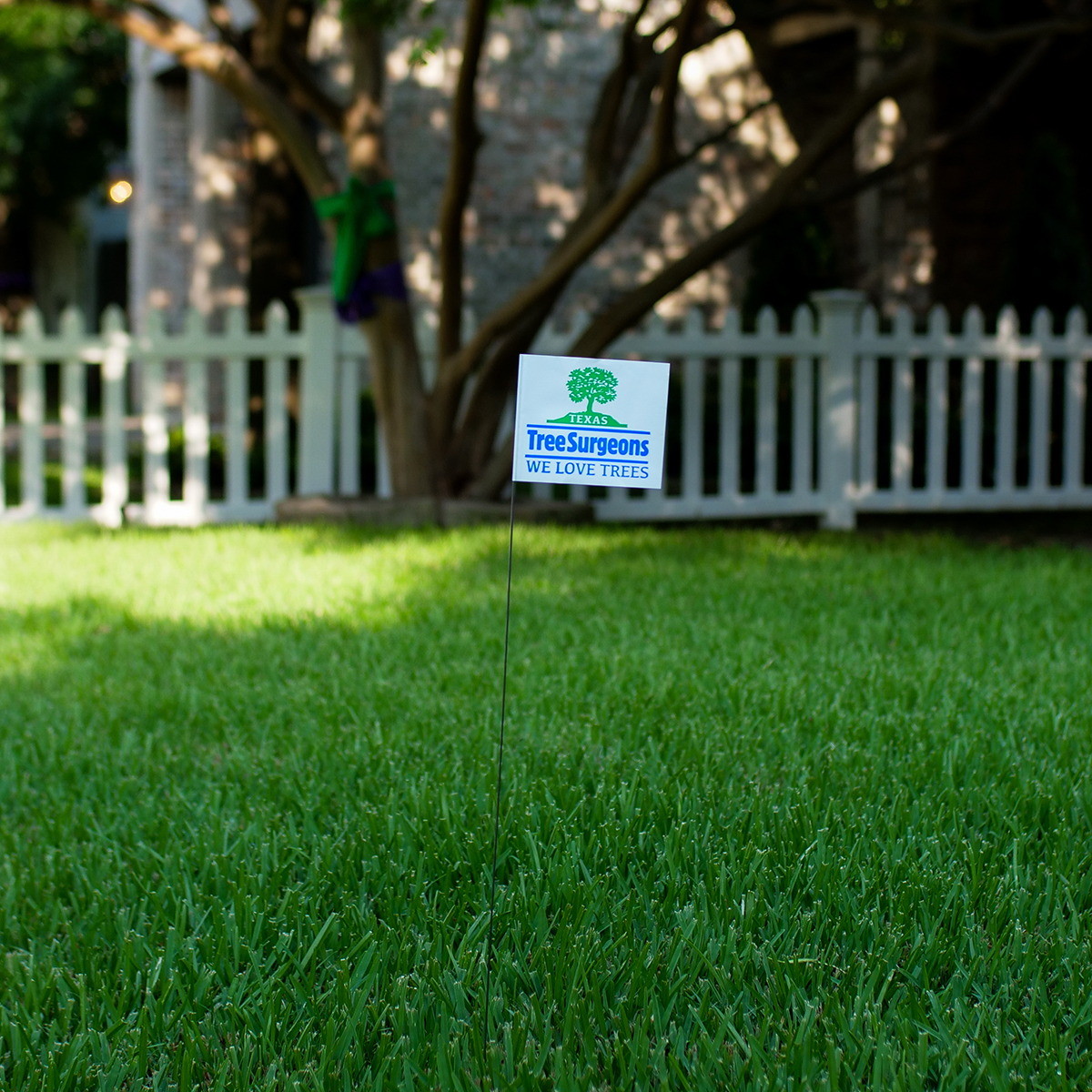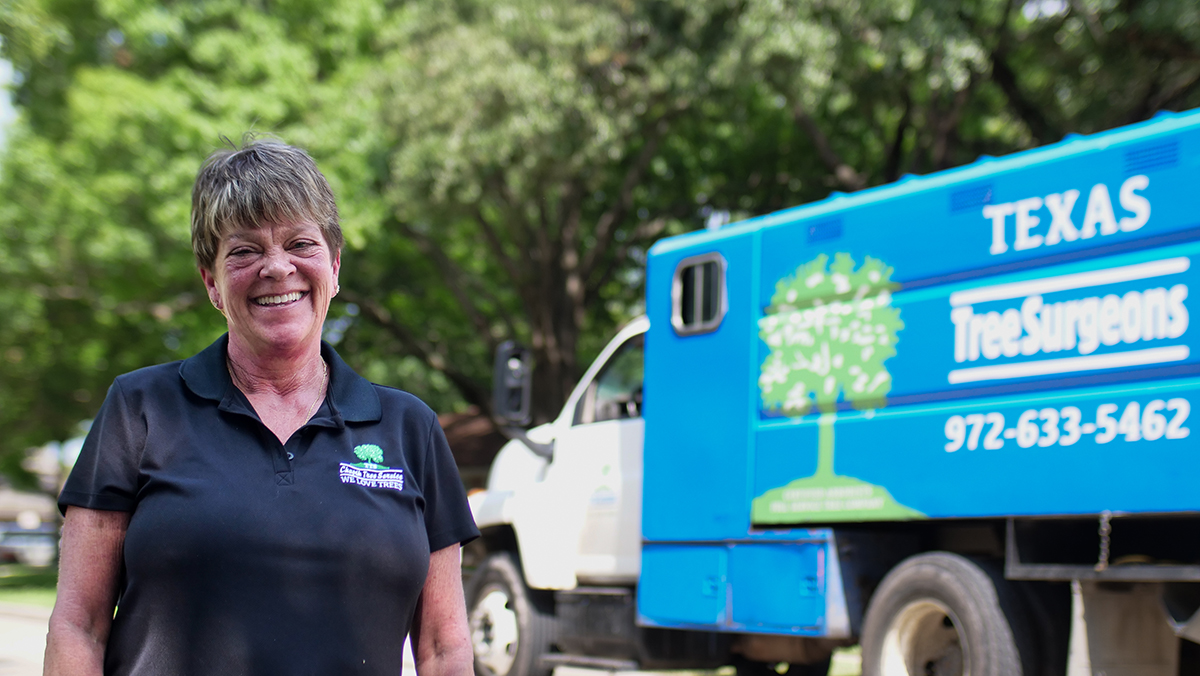The Benefits of Air Spading for Tree Care in North Texas

Urban trees require more care to maintain health than trees in a forest. They face multiple stressors which together create a cycle of decline for the tree. By changing or alleviating a single stress to a tree will improve their vitality. In this blog we will detail how air spading can improve tree health.
Understanding the Basics of Air Spading
Air spading is a process that uses compressed air to break apart soil without damaging the tree roots. This method is beneficial because it allows arborists to carefully excavate around tree roots, addressing issues like soil compaction without causing harm.
The science behind air spading revolves around maintaining the integrity of a tree’s root system. Traditional methods often involve mechanical digging, which can inadvertently damage roots and compromise the tree’s health. By contrast, air spading provides a non-invasive approach that ensures the root system receives necessary aeration and nutrients. Notably, this method aids in uncovering root flares, an essential part of the tree’s overall structure and health. Recognizing these benefits, arborists frequently recommend air spading as part of a proactive tree care strategy.
Incorporating air spading into regular tree maintenance programs not only preserves the structural integrity of the root system but also enhances the tree’s ability to withstand environmental stresses. The process allows trees to absorb water, oxygen, and nutrients more effectively, ultimately leading to healthier growth and longevity. This technique represents a paradigm shift in tree care, emphasizing sustainability and ecological balance.

Why Air Spading is Essential in North Texas
North Texas offers a unique set of challenges for tree growth, including clay-heavy soils and intense heat. Air spading helps alleviate soil compaction, allowing tree roots to access essential nutrients and water. This is critical for tree health in this region’s tough conditions.
The climate in North Texas is characterized by scorching summers and periodic droughts, which can place immense stress on trees. Clay-heavy soils exacerbate these conditions by restricting root growth and impeding water penetration. Consequently, trees often struggle to access essential nutrients and water. Air spading emerges as an invaluable method to address these challenges by breaking apart compacted soil and facilitating nutrient flow. In doing so, it fosters healthier, more resilient tree ecosystems capable of withstanding the region’s harshest weather conditions.
The Process: How Air Spading Works
During the air spading process, a special tool directs compressed air into the soil. This loosens the soil without harming the roots and allows arborists to examine root systems more closely. This method is efficient, safe, and greatly reduces the risk of root damage compared to traditional digging methods.
Air spading employs a nozzle connected to a compressor that delivers bursts of air at a precise pressure. This targeted airflow displaces the soil surrounding the roots without physical contact, preventing damage. Arborists can then visually inspect root structures to identify problems like girdling roots, which might be strangling the tree. The technique further aids in diagnosing soil issues without disrupting the natural habitat, thus maintaining the delicate balance of ecosystems in urban and rural settings alike.
Following air spading, tree health care technicians apply vital soil enhancements or conduct necessary pruning, ensuring optimal tree health and long-term vitality. This holistic care approach ensures trees not only survive but thrive amidst the challenges posed by North Texas’s distinctive environmental conditions. If you’re concerned about the health and longevity of your tree’s roots, consider consulting with an ISA Certified Arborist to leverage such advanced approaches in maintaining vibrant greenery.

Benefits of Air Spading for Tree Health
The benefits of air spading go beyond immediate relief for struggling trees. It promotes healthier root systems by improving aeration and water uptake. Over time, trees treated with air spading can become more robust, better resisting disease and drought.
Air spading isn’t just about treating trees—it’s about cultivating an environment where trees can naturally flourish. By reducing compaction, it boosts a tree’s access to essential resources, significantly enhancing its vitality. Enhanced access to oxygen and nutrients translates to strengthened defenses against pests and diseases. Moreover, improved aeration can mitigate conditions like iron chlorosis, which is prevalent in North Texas due to compacted soils. The result is a robust arboriculture practice that champions longevity and resilience.
Trees are not decorative elements within a landscape; they are dynamic, living systems that require a precise balance of nutrients, airflow, and water. Air spading ensures these elements are optimized, thereby improving tree stability and resilience. If you’re invested in learning more about innovative treatments to enhance your landscape’s vitality, our detailed guides offer a wealth of knowledge.
Choosing the Right Professionals for Air Spading
Selecting the right arborist is essential for effective air spading. Look for professionals with experience in the technique, as well as knowledge of the local environment in North Texas. A skilled professional will not only perform the procedure correctly but also provide valuable insights into future tree care.
When deciding on a professional arborist for air spading, it’s crucial to verify their credentials. Certified Arborists have undergone rigorous training and possess a nuanced understanding of tree health and soil dynamics. Their expertise allows for bespoke solutions tailored to each unique tree environment. With tree roots being the cornerstone of stability and growth, it’s paramount that air spading techniques are applied proficiently to safeguard your investment. For guidance on finding the best fit for your tree care needs, our expert consultations can be instrumental in making informed choices.
The success of air spading ventures relies heavily on the arborist’s ability to combine technique with environmental sensibility. Professionals who understand North Texas’s unique challenges, such as soil type and climate conditions, are better equipped to offer comprehensive care. Engaging the right expert not only addresses immediate concerns but also fortifies trees against future challenges, ensuring long-term health and vibrancy. Choosing the right partner for maintaining your trees’ vitality might be the difference between enduring landscapes and transient greenery. Consider enlisting professional services from our certified team.

At Texas Tree Surgeons we love trees. By prioritizing the health of a tree’s root system and fostering a more natural growth pattern, air spading not only ensures the immediate health of your trees but also sets them up for longevity. Together we can ensure thriving trees in Texas by regularly assessing urban trees and providing them with care.
Related Blogs
Similar blogs related to this topic


Facts About Home Insurance & Trees
It’s becoming way too common, especially in Texas, homeowners receiving a threatening letter from their insurance company to drastically remove all tree limbs over a structure to prevent them from falling onto the house. Don’t…
Read more

Avoid These Tree Care Mistakes for a Healthy Landscape
Below is a list of overlooked mistakes that could jeopardize the health of your trees. From missteps in pruning to incorrect watering practices, discover how to give your trees the care they deserve. Red oak…
Read more

10 Tips from Your Local Arborist to Enhance Your Tree’s Health
Trees are an integral part of our environment, providing shade, beauty, and clean air. As living organisms, they require care and attention to thrive. Who better to offer advice than your local arborist? Here are…
Read more